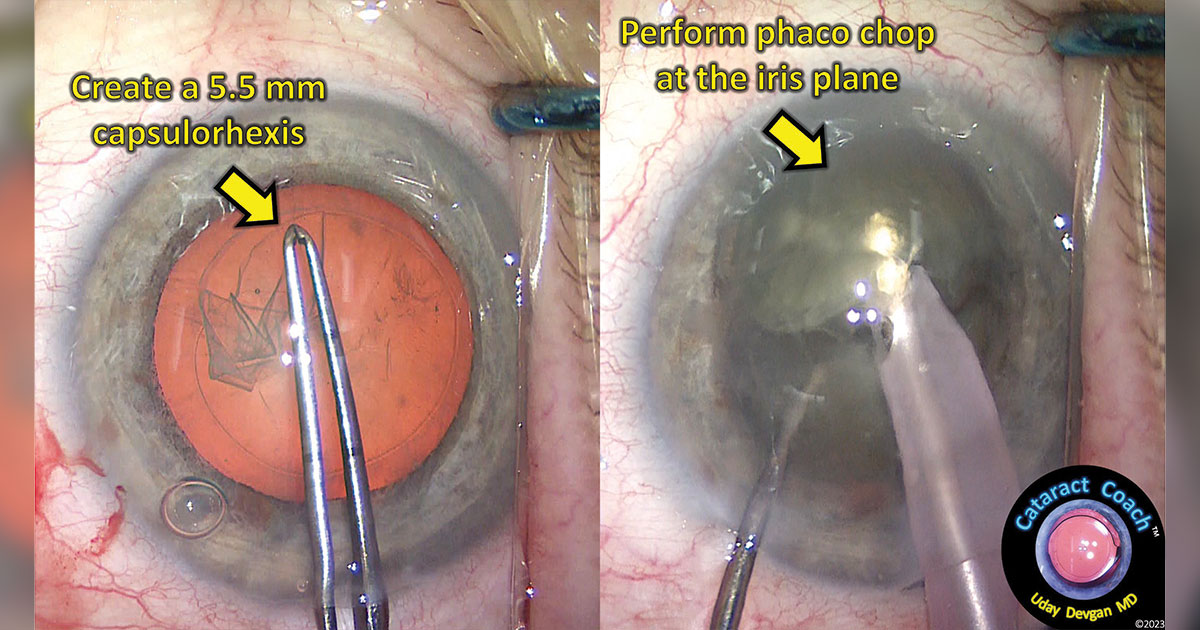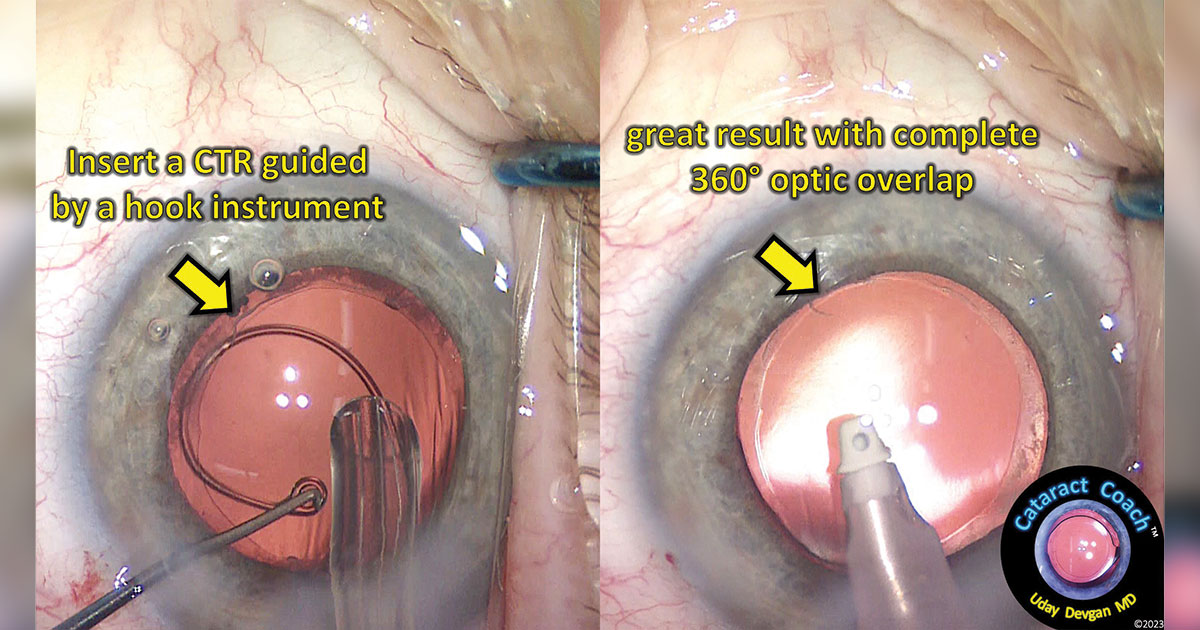Be prepared to manage extensive pseudoexfoliation during cataract surgery
Pseudoexfoliation affects only a small percent of patients undergoing cataract surgery, but it is important to recognize because it poses challenges, particularly intraoperatively.

The dandruff-like proteins that are created and scattered in the eye are associated with progressive zonulopathy, which increases the risk for complications. These patients often have poorly dilating pupils and loose zonular support and are more prone to complications including capsule damage, vitreous prolapse and poor visual recovery.

At the initial consultation, the patient was noted to have a 2.5 mm anterior chamber depth while seated upright at the slit lamp. This seemed rather shallow given the patient’s 23.6 mm axial length and emmetropia. While phacodonesis was not noted at the preoperative examination, when the patient was reclined to the supine position in the exam chair, the anterior chamber deepened to about 3.5 mm. This indicates significant zonular laxity and movement of the entire lens-iris diaphragm.
In the operating room, the patient did indeed have a much deeper anterior chamber while in the supine position (Figure 1). Upon instillation of an intracameral mydriatic agent, the patient’s pupil dilated to about 6.5 mm, which is a good sign because poor dilation is associated with higher risks for complications and capsular damage.
During the creation of the capsulorrhexis, we can discern the condition of zonular support with even more certainty. If the anterior lens capsule wrinkles extensively and the nucleus moves as the capsulorrhexis is torn, that indicates more severe zonular laxity. Fortunately, in our case the capsule and lens seemed relatively stable, and a large 5.5 mm diameter capsulorrhexis was created (Figure 2, left). These pseudoexfoliation patients tend to have anterior lens capsule contraction and even phimosis in the postop period. Making a large capsulorrhexis can help to counter these issues and provide better long-term support and centration of the IOL.

The nucleus was brought partially out of the capsular bag using hydrodissection and then chopped at the iris plane in order to lessen the stress on the capsular bag (Figure 2, right). After removing the nucleus, the cortex was gently removed using the coaxial irrigation-aspiration probe, with care taken to vacuum out the lens cortical material without causing further zonulopathy.
The capsular bag was noted to be rather floppy with a tendency to collapse during cortex removal. For this reason, a capsular tension ring (CTR) was implanted into the capsular bag, which was inflated with cohesive viscoelastic. Using a hook to guide the leading eyelet of the CTR allows for precise and controlled placement without causing further zonular stress (Figure 3, left). For IOL placement, we have two primary options: implant the IOL into the capsular bag for cases of moderate zonulopathy or for cases of more severe zonular weakness, a three-piece IOL can be placed with the haptics in the sulcus and the optic captured behind the capsulorrhexis. For our patient, the zonulopathy was moderate, and the IOL was placed fully in the capsular bag where the 6 mm optic was nicely overlapped for 360° by the 5.5 mm capsulorrhexis (Figure 3, right).

Our patient had a great outcome with recovery of excellent vision. While we anticipate excellent long-term stability and centration of the IOL, if there is a late-stage progressive zonulopathy with displacement of the lens-bag complex a decade or two from now, we can secure it to the sclera using sutures around the CTR.
A video of this surgery can be found at https://cataractcoach.com/category/pseudo-exfoliation/.
- For more information:
- Uday Devgan, MD, in private practice at Devgan Eye Surgery and a partner at Specialty Surgical Center in Beverly Hills, California, can be reached at devgan@gmail.com; website: www.CataractCoach.com.








